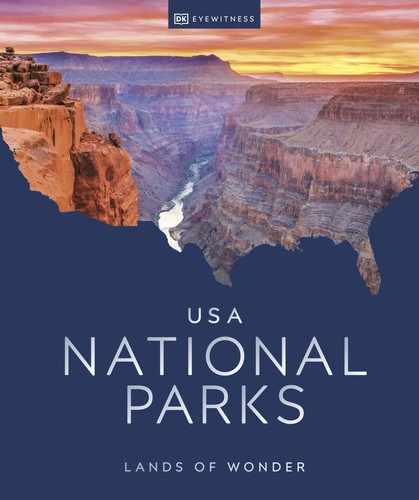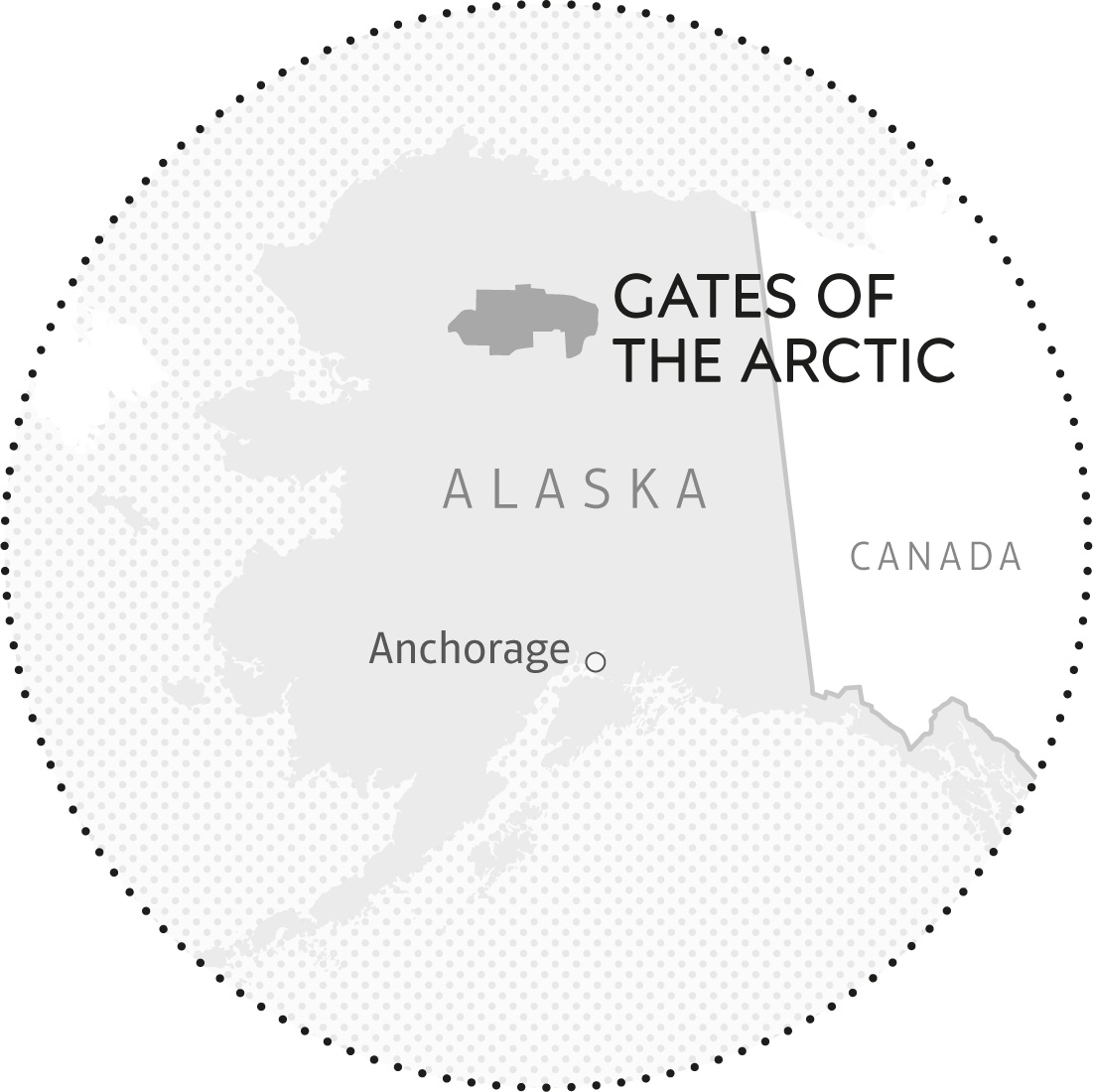
Alaska
GATES OF THE ARCTIC
ESTABLISHED 1980
For raw, remote wilderness, nothing beats this park—no roads, no trails, no permanent population, and landscape straight out of a Jack London tale.
It’s the lucky few who get to savor this beauty. Only 10,000 people visit Gates of the Arctic National Park and Preserve each year, mainly because of the challenge in reaching it—effort rewarded tenfold. The six rivers coursing through the terrain make the park surprisingly lush in summer.
By contrast, winters are extremely harsh. Yet this part of northern Alaska has been home to nomadic peoples for 11,000 years. Nunamiut Eskimo roamed the land now covered by the national park, gathering food and following the migrations of the caribou, which they depended on for survival. These massive deer were the local lifeblood: providing meat and hides for clothes, snowshoes, and sleds; bones that were fashioned into hunting tools; and sinews that became fishing nets.
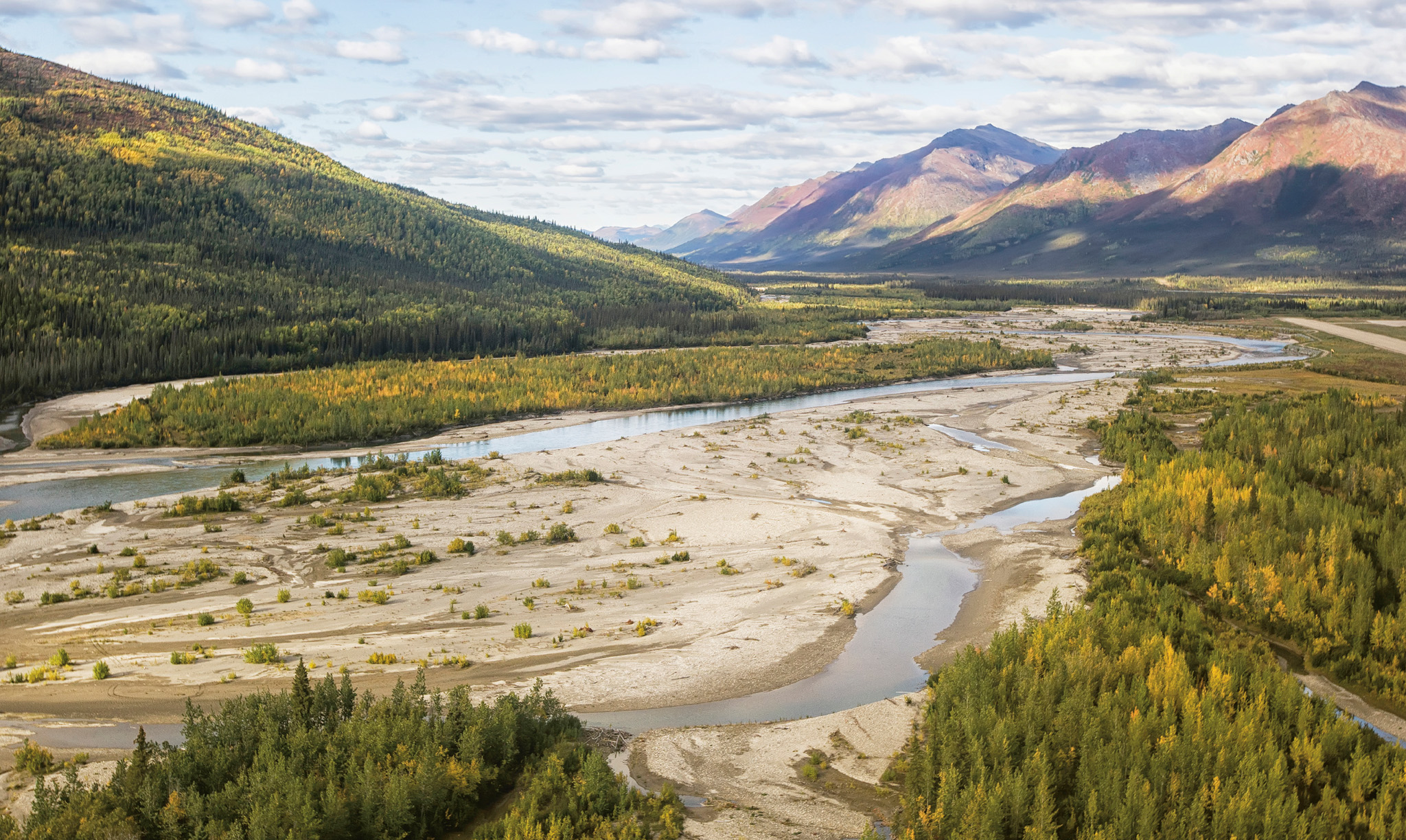
In the summer months, the Koyukuk River flows calmly through the landscape beside the Brooks Range
PARK PIONEERS
Bob Marshall
Scientist and early explorer Bob Marshall coined the name “Gates of the Arctic” in 1929, after observing the twin peaks of Frigid Crags and Boreal Mountain faced off across the Koyukuk River. Sadly, he died at age 38, but his book about his exploits was published posthumously and was influential in the park’s creation.
Great migration
The people have now moved to a nearby village, but the caribou remain, some half a million of them, and they still migrate north in the summer and south in the winter. Witnesses to the migration are seeing one of the world’s great wildlife spectacles. Other animals live here, too: brown and black bears, moose, and the beautiful Arctic foxes, which, like the land, turn snow white in the winter. In the skies, you may spot golden eagles, bald eagles, red-tailed hawks, goshawks, or perhaps a fearsome osprey stretching out its talons to pluck a fish from a river.
Such moments make the effort of getting here—an adventure in itself—worth it: from Fairbanks, hop on a flight to one of the gateway settlements near the park, then take an air taxi or hike into the park, where the rest of the adventure unfolds.
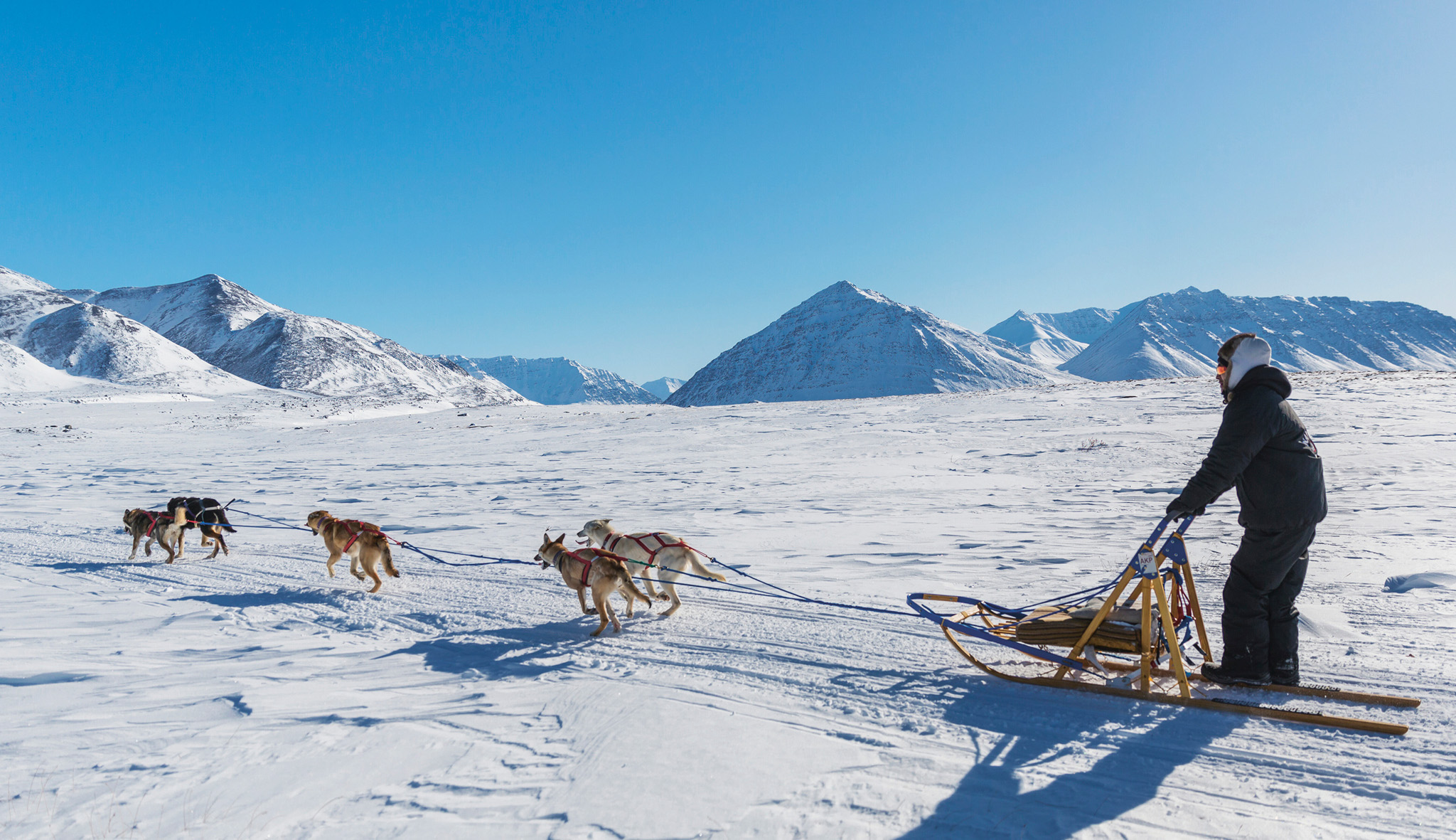
A musher drives a dog team through Anaktuvuk Pass; this mode of transportation has been around 9,000 years in the Arctic
Best River Activities
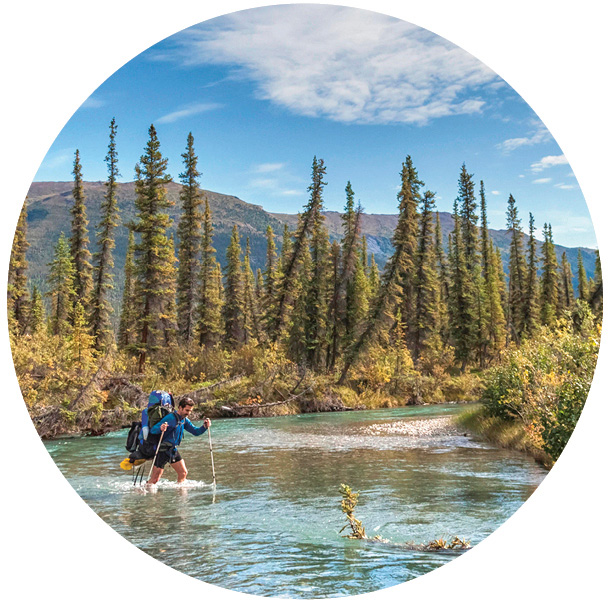
Fishing ▷ The Alatna River runs for 83 miles (134 km) through what is traditional hunting territory for the nomadic peoples of the region. Its gentle pace and prime fishing make it popular.
Scenic float The Kobuk River, at 110 miles (177 km), is one of the most scenic rivers, winding through forests and mountains, making it good for an easy float on a kayak or raft, although there are a few tricky rapids to negotiate.
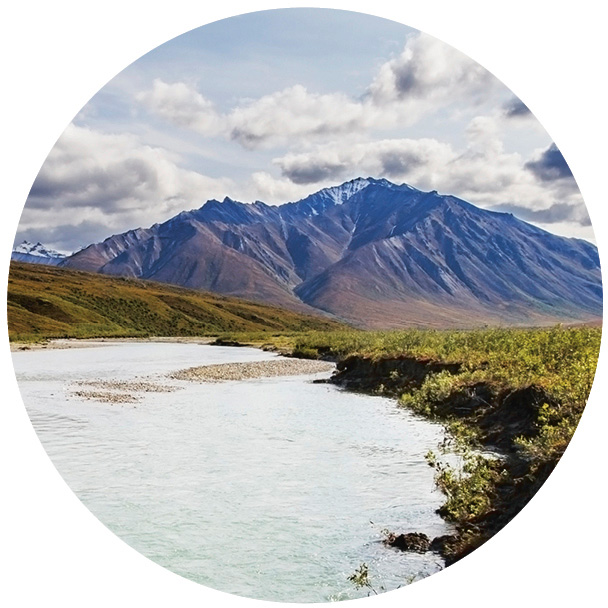
Arctic trip ▷ The Noatak River is 425 miles (684 km) long, all of it within the Arctic Circle, but not all of it in the park. The park section, navigated in a canoe, leads through a glacial valley below snowcapped peaks.
Rapids rafting The North Fork of the Koyukuk River offers the challenge of whitewater rapids along parts of its 102-mile (164-km) length, as it flows through glacial valleys in the Endicott Mountains.
